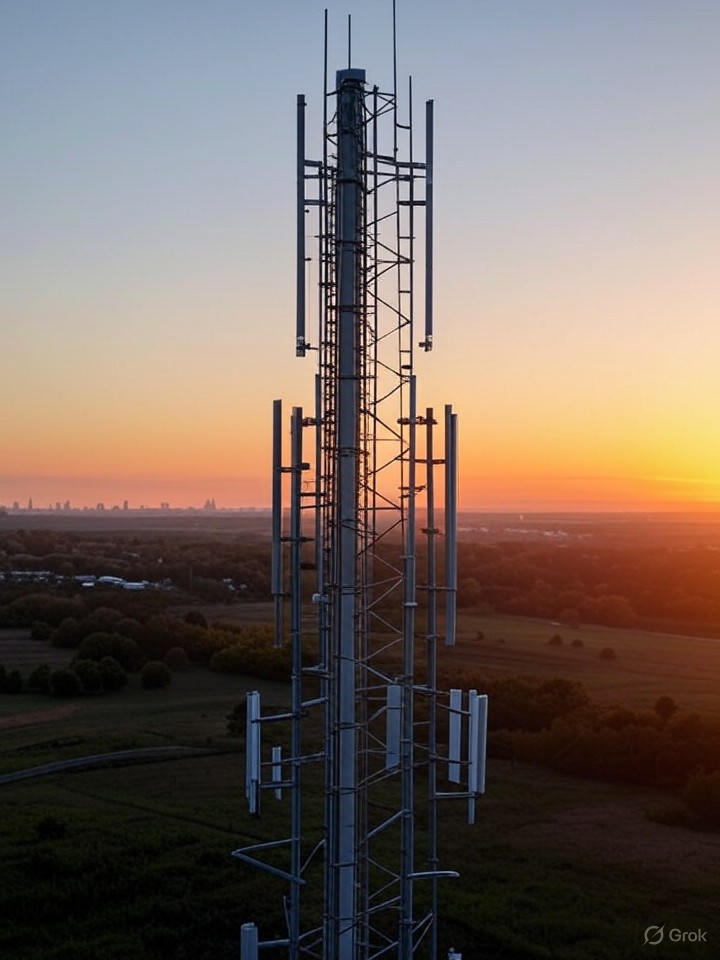In a bold move to solidify its position in the telecommunications sector, AT&T Inc. has agreed to acquire a substantial portfolio of wireless spectrum licenses from EchoStar Corp. for approximately $23 billion in cash. The deal, announced this week, involves 50 MHz of nationwide spectrum that will significantly enhance AT&T’s low- and mid-band holdings, crucial for expanding 5G networks and fiber broadband services across more than 400 U.S. markets. This acquisition comes at a time when demand for high-speed connectivity is surging, driven by remote work, streaming, and emerging technologies like AI and IoT.
Pascal Desroches, AT&T’s chief financial officer, described the transaction as a strategic investment that promises “attractive returns” for shareholders while accelerating the company’s converged connectivity strategy. In an interview with Fortune, Desroches emphasized that the deal aligns with broader industry goals, stating, “This transaction is good for both consumers and competition across our industry, which aligns with the administration’s priorities.” The spectrum assets, primarily in the low- and mid-band ranges, are expected to supercharge AT&T’s ability to deliver faster, more reliable 5G services without the need for costly new auctions or infrastructure overhauls.
Strategic Implications for AT&T’s Network Expansion: As AT&T integrates these spectrum licenses, industry analysts anticipate a rapid rollout of enhanced 5G capabilities, potentially covering underserved rural areas and bolstering urban density. This move not only addresses capacity constraints but also positions AT&T to compete more aggressively with rivals like Verizon and T-Mobile, who have been investing heavily in similar assets.
EchoStar, which owns Dish Network and Boost Mobile, has been under regulatory scrutiny from the Federal Communications Commission over its spectrum usage, with concerns that it might lose licenses if not deployed promptly. The sale provides EchoStar with much-needed liquidity to avoid bankruptcy risks and fund its own wireless ambitions, including expanding Boost Mobile. According to a report from Bloomberg, the deal was influenced by urgings from President Donald Trump, highlighting the intersection of policy and corporate strategy in the telecom space.
Market reactions have been swift and telling. EchoStar’s stock surged more than 70% in premarket trading following the announcement, reflecting investor relief over the company’s financial stabilization. AT&T shares, meanwhile, saw a modest uptick, with analysts praising the deal’s long-term value. Posts on X, formerly Twitter, from users in the investment community echoed this sentiment, with many noting the deal’s potential to reshape U.S. wireless dynamics, though some cautioned about regulatory hurdles ahead.
Economic and Competitive Ramifications: Beyond immediate stock movements, this $23 billion transaction underscores a broader trend in telecommunications where spectrum scarcity drives multibillion-dollar deals. For AT&T, ranked No. 37 on the Fortune 500, it represents a calculated bet on future revenue streams from 5G-enabled services, potentially yielding returns through increased subscriber growth and enterprise contracts.
Desroches further elaborated on the financial upside in discussions reported by BizToc, projecting that the spectrum will enable AT&T to accelerate its fiber buildout and 5G deployment, targeting millions more households. This is particularly vital as consumer demand for fixed wireless access grows, competing with traditional cable providers. The deal excludes EchoStar’s Dish and Sling TV businesses, focusing purely on spectrum, which minimizes antitrust concerns but still requires FCC approval.
Industry insiders view this as a win-win: AT&T gains premium assets at a time when spectrum auctions are infrequent and expensive, while EchoStar offloads holdings under pressure. As noted in an AP News analysis, the transaction could enhance overall competition by allowing EchoStar to invest in its mobile operations, potentially introducing more affordable plans to challenge the big three carriers.
Looking Ahead to Regulatory and Integration Challenges: While optimism abounds, the path forward involves navigating FCC reviews and possible Justice Department scrutiny to ensure the deal doesn’t concentrate too much spectrum in AT&T’s hands. Successful integration could set a precedent for future consolidations, influencing how other carriers approach spectrum strategy in an era of rapid technological advancement.
For AT&T, this investment aligns with its broader push into converged services, blending wireless, fiber, and satellite elements—a strategy Desroches has championed. Recent partnerships, such as those hinted at in X posts about satellite connectivity innovations, suggest AT&T is eyeing hybrid models to extend coverage beyond terrestrial limits. The deal’s timing, amid economic uncertainties, underscores AT&T’s confidence in telecom’s resilience.
Ultimately, as Desroches told Fortune, the focus is on delivering value: “We’re investing in critical U.S. communications infrastructure.” With 5G adoption projected to drive trillions in economic value by 2030, this $23 billion bet could pay dividends for years, reshaping how Americans connect in an increasingly digital world.




 WebProNews is an iEntry Publication
WebProNews is an iEntry Publication